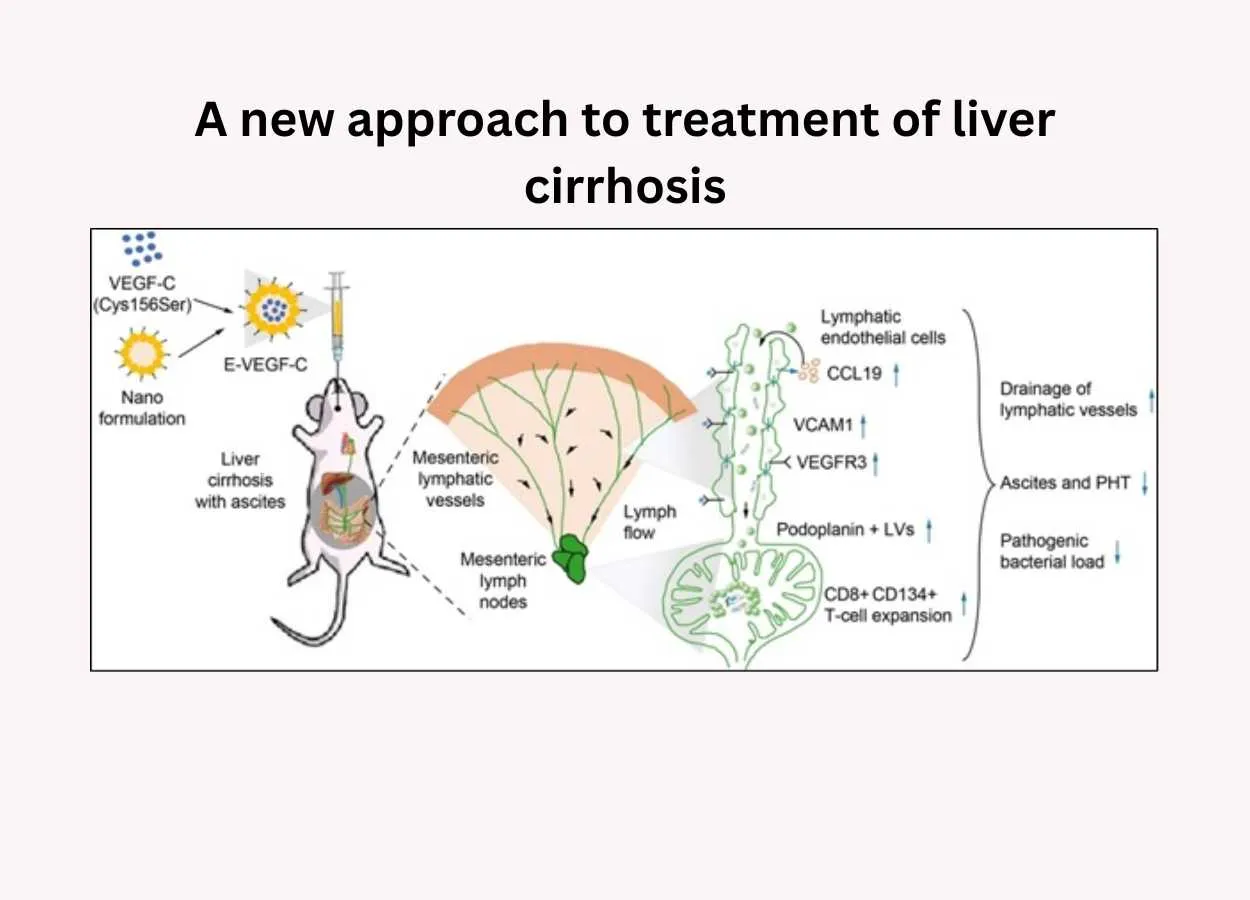A team of Indian scientists may have found a way to improve the drainage capacity of lymphatic vessels in the liver and intestine that fails in case of cirrhosis, by using nanocarriers filled with a powerful protein called VEGF-C.
Chronic liver disease can progress from mild disease to fibrosis to cirrhosis. Patients with advanced cirrhosis often develop decompensation with complications like fluid accumulation in the abdomen (ascites).
Cirrhosis is accompanied by distortion of both blood and lymphatic vessels in the liver and intestine. The lymphatic vessels run parallel to the blood vessels, draining extravasated interstitial fluid, proteins, and immune cells and transporting them back into the venous blood. Intestinal mesenteric lymphatic vessels (mLVs) are increased in cirrhosis but remain dilated and dysfunctional.
Due to increased liver congestion and pressure of the portal vascular system, the production of abdominal lymph increases by 30-fold in cirrhosis. An increased lymph formation along with reduced lymph flow and drainage capacity of the existing mLVs, leads to development of abdominal fluid accumulation in patients with advanced cirrhosis. Till date, there are no effective treatments for patients with decompensated cirrhosis.
Vascular endothelial growth factor-C (VEGF-C) is a key pro-lymphangiogenic factor that activates lymphangiogenesis or new lymphatic vessel growth. It does this through binding to a cell membrane tyrosine kinase receptor, vascular endothelial growth factor receptor-3 (VEGFR-3) the activation of which is essential for the growth and development of new lymphatic vessels.
Recombinant VEGF-C has earlier been proved to be effective in stimulating the growth of new lymphatic vessels, improving lymphatic drainage and immune responses.








